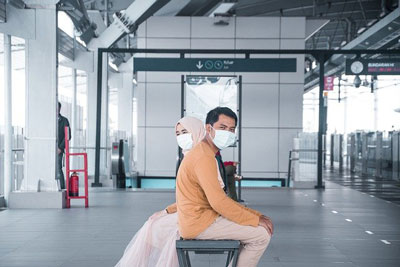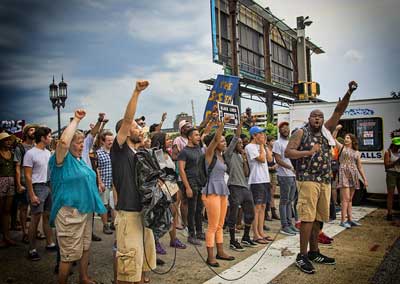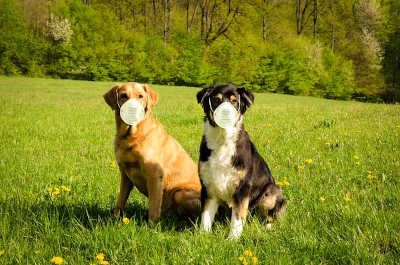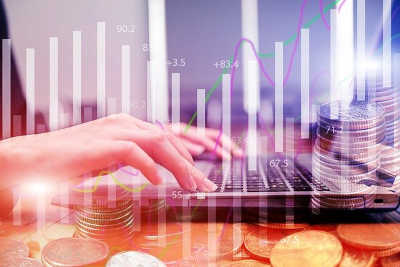Add Comment
Sudan’s war cripples economy, leaving many struggling to afford basic necessities • Al Jazeera English
📢 India Finance & Economy Highlights – Nov 30, 2025Key Highlights:📉 • WealthBuildersClub_KA
Winter tourism will transform India’s economy: PM Modi gives a BIG vision | #MannKiBaat • Narendra Modi
India’s Economy Shocks the World: 8.2% Growth #indianeconomy #indiangrowth #india #viral • The Fact Flash














This last year will surely be included in the history books.
Who would have thought of living a pandemic? It was like being in a science fiction movie. And if in a first phase fear was accompanied by hope, union and the desire to overcome the moment, then many other emotions emerged, mostly negative.
Frustration and impotence because in addition to acting responsibly each of us could do very little. Added to this, is the fear of falling ill and losing family and friends.
SOME DATA…
Both the advanced economies and the emerging economies likely have to look downwards at their growth estimates made before the pandemic, but some of them saved themselves from the negative sign, such as China, because they showed exponential growth in previous years.
According to the projections, which can be consulted in detail on the web page of the International Monetary Fund, the world average growth will be -4,4%.
And if this is more optimistic than the IMF predicted in the first phase of the pandemic, many economists argue that all the progress made since the 1990s in reducing poverty and inequality will be erased.
It is estimated that almost 90 million people could fall into extreme poverty. This figure could also worsen if we consider that most governments have put in place emergency manoeuvres, such as subsidies and a ban on dismissal, which are not economically viable in the long run.
Once the resources dedicated to these emergency measures are exhausted, millions of people will no longer have economic revenue.
The consequences of the global crisis are also very evident in the field of work. In both advanced and emerging economies, the unemployment tax will rise dramatically.
The numbers are really shocking, we are talking about millions more unemployed than the previous year. This is also a fact that could be worse than expected because among the emergency policies many States have included the ban on dismissal. When this measure expires, the estimates are not positive.
The sectors most affected are trade, tourism, catering, artistic activities, culture and entertainment but in an increasingly interconnected economy, all areas have been affected.
No less important, also for an assessment of the economic situation, are the numbers related to the spread of the virus.
According to the experts, these are numbers that underestimate the real spread because it is difficult, if not impossible, for many States to take into account new cases, deaths and healings.
It’s what happens on the African continent or in some countries in Central and South America, where there are areas where the authorities also ignore the number of inhabitants or other important demographic data.
But to get an idea of the gravity of the phenomenon it is possible to refer to the numbers reported by the WHO, according to which the confirmed cases, updated to 12 January 2020, are 89,416,559. This figure includes the deceased who are 1,935,028.
Most of the positive cases result from family contagion, most likely the meetings on the occasion of the Christmas holidays have significantly worsened the data. The lack of available data does not allow us to perfectly outline the characteristics of this Coronavirus, such as the rate of morbidity and lethality.
This is quite difficult to calculate precisely because of the high number of asymptomatic, but the specialists consider that the new SARS-Cov-2 probably generates the death of 0.5%-1% of the infected individuals.
The certain fact is that this percentage will be greater in people of advanced age while most of the asymptomatic are found in the age group under the 40 years.
HOLISTIC PERSPECTIVE OF THE CRISIS
All economic problems inevitably affect the psychological well-being of the individual and consequently increases the risk of social instability. The latter also affects an increasingly marked inequality.
In other words, the world of luxury has not seen significant changes while the middle and lower classes have seen a drastic decrease, if not totally, their income and their purchasing power even for goods of primary need.
Uncertainty, fear of losing their jobs and consequently economic stability leads the individual to question his abilities. It’s normal to ask yourself what will happen and whether you will be able to face the challenges of the future, such as finding a new job or having to start in a completely unknown sector.
The pressure is even stronger if you include in the equation the concern for your family. Not only do you fear for your own future, but also for that of your own children.
Although all governments have put in place subsidies and aid to avoid the excessive impoverishment of the population, the feeling that prevails is that of uncertainty, there is no long-term perspective.
This feeling starts from the economic field but undoubtedly affects the psychology of the individual and the community of belonging.
Another factor to consider is the feeling of loneliness. There are many cases in which the necessary physical distance also becomes emotional and social. The person is often faced with conflicting feelings, that is, he understands the necessity of the various impositions but at the same time feels violated their personal freedom, that of socializing in the first place.
Experts say in this respect that the use of technologies was of paramount importance.
The need, natural of the human, to communicate and relate has found a valid ally in computers, tablets and smartphones. The isolation has been greatly mitigated by these instruments.
Many people have been overwhelmed by the situation. Although no precise data has been collected due to the health emergency, there is no doubt that requests for psychological help are increasing.
Professionals have in fact shown a significant increase in psychological discomfort. Among the disorders that more than others have shown a significant increase are stress disorders, anxiety disorders, hypochondria and some obsessive-compulsive disorders. Psychotherapy, even in healthy individuals, can be a great help to overcome the moment.
On the other hand, the economic crisis caused by the pandemic can also be a trigger for social and riot crises.
The measures put in place, limiting personal freedoms, have unleashed in certain groups of the population of opposition conduct, such as riots and demonstrations.
There were very many movements that took to the streets to express their dissent, both in the name of personal freedoms (no-vax, no mask, deniers) and in the name of an economic recovery always postponed.
This attitude was much more evident in the second half of 2020 because health concern has given way to concern about the worsening economic and employment crisis.
In fact, the negationist movements, present for years but with different shades, have found fertile ground in the climate, now growing, of desperation and uncertainty.
MODELS IN COMPARISON
The year 2020 highlighted the strengths and weaknesses of the two main political, economic and social models: the East, of which China was the main representative, and the West. The latter has not followed a single path in the fight against Covid-19, just think of how many different answers have been given in Europe.
In the West, both in Europe and in the USA, the population has in its recent history no pandemic episodes, as opposed to many eastern states.
Since the 1950s, in fact, they have faced numerous pandemics: Asia (1957-58), Hong Kong flu (1968), SARS (2002-04), Avian Flu (2005-06), MERS (2012).
The fact of already having experience in the fight against diseases has not only made their health system more efficient and faster, but the populations have a total perception of the phenomenon and the consequent impositions.
This is another huge difference between the two models. In Western society, hyperindividualism reigns supreme, while in Eastern society, which in most cases identifies itself with socialism, the common good is a supreme value, so that any renunciation becomes a moral duty towards the community of belonging.
From this conception derives also a different vision of civil and personal freedom. For example, in China, negative movements are virtually non-existent.
However, it should be remembered that, because of its undemocratic structure, the government can impose greater limits and controls on individual freedoms than would be acceptable in most Western countries.
In fact, at the same time, in many European and American capitals, we have seen an increasing number of demonstrations and protests against restrictions. For example, the mask, a very common object in the eastern cities, becomes a symbol of deprivation and damage to democratic freedoms.
Another difference between these two models lies in the Government’s action on the industrial production of protective instruments and materials. These are produced internally, converting numerous factories, to achieve complete autonomy.
For the same purpose, the central government also controls the personal services sector, while decades of neoliberal policies in Western states have reduced the welfare state to an economic affair like others. The various reforms have pushed public agencies to behave more and more like private companies.
Surely China has shown an enormous capacity for response and organization, so much to be praised internationally. But it is a model that cannot be generalized, nor repeated in other States, at least not in those with strong liberal roots and a developed democracy.
A NECESSARY CHANGE
In light of everything that happened in this strange 2020, it is inevitable to look to the future. Surely something has to change.
Copy the Chinese model? Absolutely not, it would be a tremendous defeat of the democratic model and all those rights conquered with so much effort. But without doubt, it will be necessary to review the priorities, both individual and those of each state or community.
For example, it was very clear in many countries that the health system was not prepared at all, both in the first and in the second wave.
Over the years, health care and research have lost their importance with a significant decrease in state investment. (An example very close to me is Italy, where for more than 10 years Governments just cut resources, without optimizing them and where the pandemic deaths were really too much).
Just think of the shortage of staff and suitable facilities, as well as the lack of all those protective devices for medical staff, which has, in fact, counted many victims.
The shortage also involved the beds, many nurses and doctors said they had to choose who to save. That shouldn’t be part of their job.
And when we talk about the investment we are referring not only to the structural and material part but also to human capital. It is important to begin a process of enhancing the value of healthcare personnel, investing in continuous training so that they are as prepared as possible in the face of these phenomena.
Another change concerns individual concepts and mentalities. Precisely the dominant hyperindividualism in Western society has created some obstacles in breaking the chain of infections.
It’s not a question of solidarity, which has been really so difficult this year, but of modifying one’s behaviour in the perspective of co-responsibility and empathy. Historically, solidarity united with cooperation has produced many benefits both within communities and internationally.
Many theorists claim that the Covid-19, despite the disaster it will leave behind, is also a good opportunity to change the economic development model, with an eye to environmental and social sustainability.
After all, the pre-covid world was closely linked to a highly polluting economy. There is the possibility of investing in the quality of the products and work sector and this affects people’s lives.
There are really many actions that can be put into practice to start the change: circular economy, use of renewable energy, redesign of urban nuclei and rethinking of housing solutions, socially responsible finance and much more.
All these activities have a positive impact on the labour market because they require new professionals and create numerous jobs. It is estimated that by 2023 the green economy sector will generate 500,000 new jobs, more than double those expected in digital.
In other words, thanks to sustainability, it is possible to think of a more healthy and responsible economic recovery.
This last year has been a year that will hardly be forgotten, and perhaps this is the key, to take advantage of this experience to understand what the priorities are and to work on weaknesses, in all areas.
It is precisely in this direction that the OMS communiqué of 26 December 2020 goes, in which it states that this will undoubtedly not be the last pandemic and urges the various governments to be prepared, putting the health system at the centre of public investment.
Now it is up to us not to repeat the same mistakes and learn this great lesson.
Imagen de iqbal nuril anwar